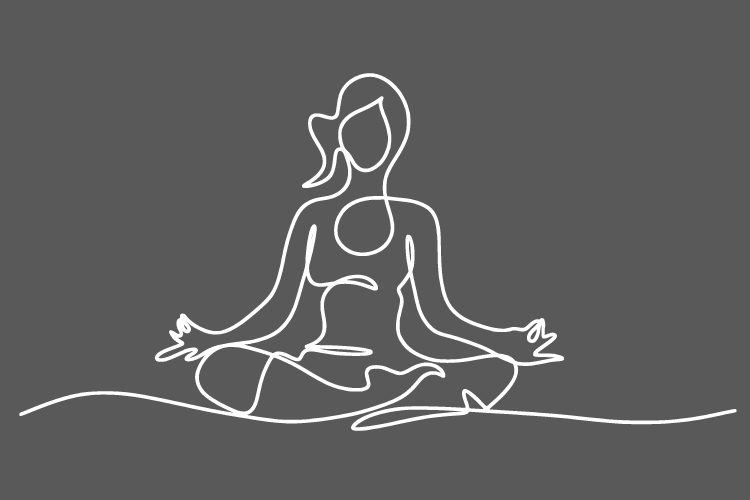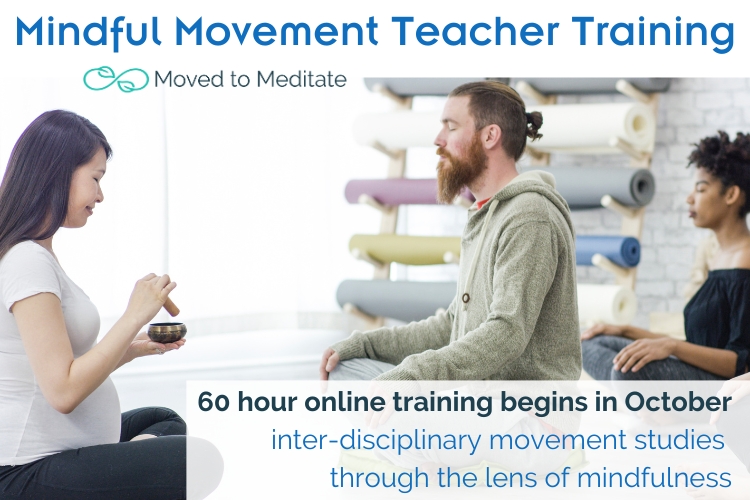Mindful Movement Class vs. Yoga Class: What’s the Difference?
Have you ever wondered what the difference is between a Mindful Movement class and a Yoga class? That question is a little more complicated than it may first appear, and so that’s what we’re going to explore in this episode of the podcast.
Episode Details:
While Yoga could certainly be considered a type of Mindful Movement, we’re going to break down the similarities and differences between a typical mainstream Yoga class and a movement class that is more like a dynamic expression of Mindfulness Meditation.
I’ll be talking about the “Mindful Movement class” as a particular format that I use in my teaching to give structure to the practice of mindfulness-in-movement. And, I’ll share how this topic is personal to me, especially as I’ve evolved in my teaching over the last few years.
Features of a Mindful Movement Class vs. a Yoga Class:
- A Mindful Movement class may be done entirely standing, sitting in a chair, or on the floor, and these positional foundations can be mixed in any way that’s practical, rather than following the expected arc of a Yoga class.
- It may draw from a mix of movement modalities, like Somatics, Yoga, Qigong, or Tai Chi, rather than being purely dedicated to one style.
- When designing a class through the lens of mindfulness-in-movement, one might take a different approach to sequencing (choosing the movements and putting them in a particular order), rather than using common Yoga sequencing guidelines.
- In a Mindful Movement class, there is more emphasis on directing your awareness and attention, to explore meditative skills through movement.
- A teacher may choose the term “Mindful Movement” for their class to indicate that it’s based more on Buddhist Mindfulness teachings, rather than Yoga philosophy.
- A Mindful Movement class might end in a seated meditation, rather than culminating with Savasana.
 Each of the above elements is explained in more detail in the episode, and if you noticed that I used the words “may” and “might” a lot in these bullet points, it’s because I’m describing my own perspective on Mindful Movement, rather than trying to speak for everyone! I don’t think that there’s widely-accepted consensus on this definition, at least at this present moment.
Each of the above elements is explained in more detail in the episode, and if you noticed that I used the words “may” and “might” a lot in these bullet points, it’s because I’m describing my own perspective on Mindful Movement, rather than trying to speak for everyone! I don’t think that there’s widely-accepted consensus on this definition, at least at this present moment.
Why Explore this Topic?
“Mindful Movement” is a VERY broad term, but I think it can be useful to explore some definitions, as these choices connect to one’s intention for practice.
And since the idea of a Mindful Movement class is less standardized, looking at it alongside the more familiar yoga class format gives us something to compare and contrast it with, which hopefully makes it a bit less abstract. My intention is not to declare that one form of practice is better, or that anything is missing from Yoga. Rather, this discussion is offered in the spirit of openness, respect, and possibility, so that we can all consider what kinds of classes might serve our needs and intentions.
I’m hoping that what I share in this episode will be helpful whether you’re newly exploring movement practices, or you’re a teacher like myself who sometimes gets tangled up in names and titles for things…
Resources & Links from this episode:
- If you found this episode interesting, check out Episode 64 “What is Mindful Movement: Basic Definitions and Beyond”
- And, Episode 45 “Exploring Movement Modalities through a Mindfulness Lens” goes into more detail about the benefits of “cross-training” with different mindful movement styles like Somatics, Qigong, and Yoga.
- This article, “Taking Mindfulness to the Mat,” by Frank Jude Boccio talks about Yoga and the Buddhist teaching of the Four Foundations of Mindfulness (which I mentioned in the episode).
Did you know there is a Free Membership Tier of the Moved To Meditate Class Library? Learn more about the Class Library and sign up for your Free Library Card to access the five featured classes from the catalog each month.
If you are interested in sharing movement-based mindfulness practices with others, take a look at the Mindful Movement Teacher Training! The next round of this online training program begins in October.
